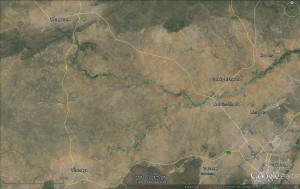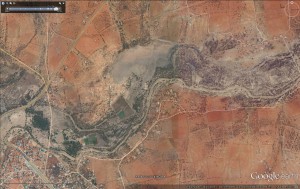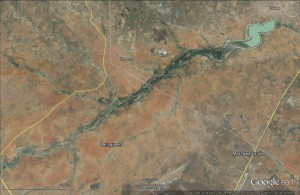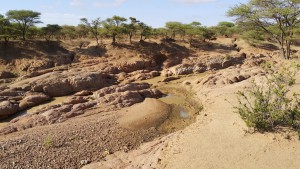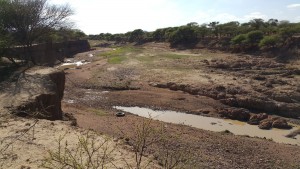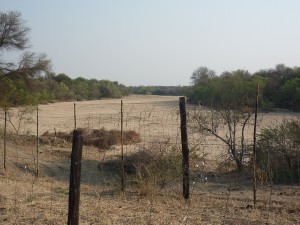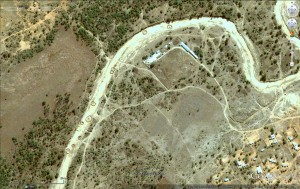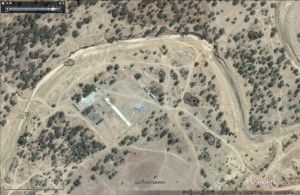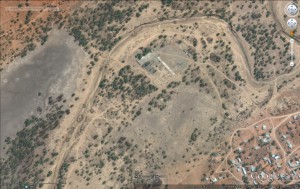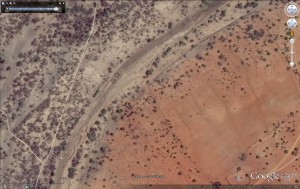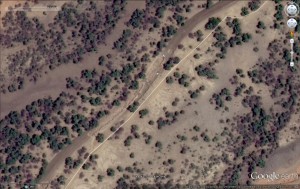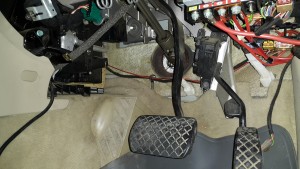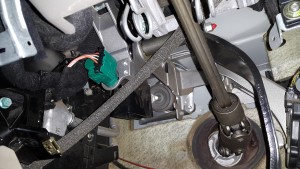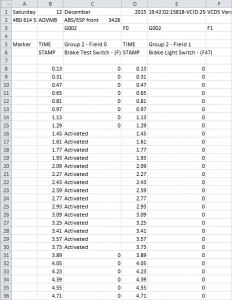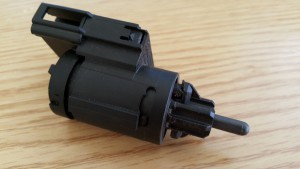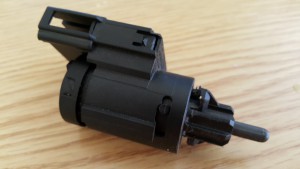Went out on a little bicycle ride this morning that took me past Mmopane down to the Metsimotlhaba River, through Metsimotlhaba village and almost (but not quite) to Gabane before heading back past Mogoditshane.
For me cycling gives me time to reflect on life, the universe and everything. Once I got down to the river my mind was turned from personal reflection to consideration of the universe, or a tiny part of it: the Metsimotlhaba River.
I actually remember watching a news story on Btv maybe 10 years ago in which the residents of Metsimotlhaba and Mmopane were complaining to their councillors about the heavy trucks driving through their villages at speed carrying sand from the river to construction projects in Gaborone. A quick internet search gives a host of media reports on the subject.
It actually started as I crossed the river near Letlhajweng: a large yellow 4-axle tipper truck was stuck in the riverbed with a bunch of guys trying to dig it out – no pictures as they were quite likely operating illegally. A flash-flood would have been nice…
From Google Earth satellite imagery it can be seen that the watercourse from Metsimotlhabe village to Bokaa Dam is quite flat, with typical floodplain geography: silt and clay, good vegetation, signs of changing river course, etc..
Interestingly the river channel becomes less pronounced as you get closer to Bokaa Dam, and I’m guessing that this is because when full the dammed water reaches back as far as Kopong, so there has been deposition across the whole floodplain.
As you move upstream from Kopong towards Letlhajweng the river channel starts to become more developed, until near Metsimotlhaba village the channel must be in excess of 4m deep and 50m wide – if not more. And completely lacking in sand. This is in stark contrast to many rivers elsewhere in Botswana that have thick sand beds, like the Ramokgwebana in the north-east.
I’ve tried to establish whether the state of the river bed at Metsimotlhaba village is due to sand mining or if there is some other reason, possibly geological, why there is no sand in the channel.
It is possible that there were historical restrictions to the flow that caused a build up of fine sediment (silts and clays, as visible in the banks) in the riverbed, and now these have either eroded or the land has tilted slightly, with the result that the sediments are now eroding to form the visible channels.
The alternative is that there was a shallow channel with sands, as would be typical elsewhere, and now that the sand has been extracted the increased flow rates are scouring the bed and banks
Further upstream there are signs that the thick sand bed does exist, traditional thorn enclosures round hand-dug well points are in evidence, and also more sand mining. Next ride out there I will have to go down to the river and see what kind of sand it is, and maybe see if I can find an old person who might remember back to before Gaborone’s construction boom.
The pictures below show a meander just west of Metsimotlhabe village, between 2002 and 2015 the number of well points has reduced. Different colour spectra makes it difficult to gauge sand content, but considering the generally light nature of 2002 and the reduced number of light patches in 2014 there is a suggestion that the amount of light sand has reduced significantly. The layout of the large compound in the meander is also reminiscent of a brick making yard – the long concrete slab is where fresh bricks are set while the cement cures.
Other developments in the floodplain are more clearing for agricultural use, which is strange when so many fields lie fallow, obviously not having been ploughed for several years. I understand that people may not have capacity to plough and that we experience unreliable rainfall (heavy drought expected this year), but why can’t agricultural and environmental departments work on getting the already cleared land put to productive use instead of more bush clearing and associated negative impacts?
Despite the various comments from officials about the negative impacts of sand mining in the search results linked above it is clear that the activity is still rife: the truck I found stuck in the river and also in satellite images.
